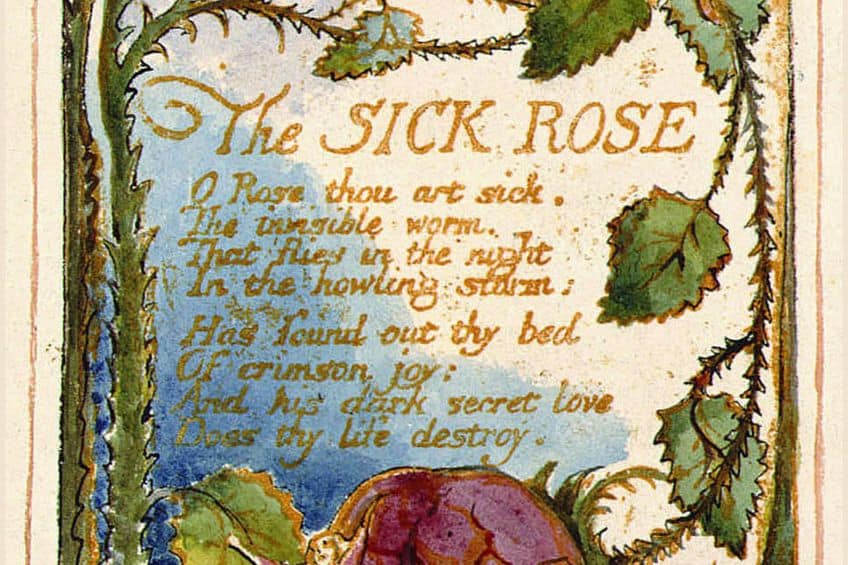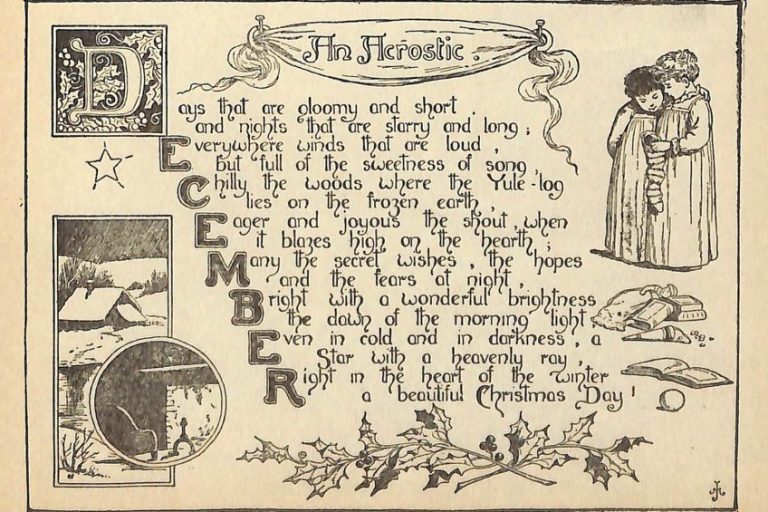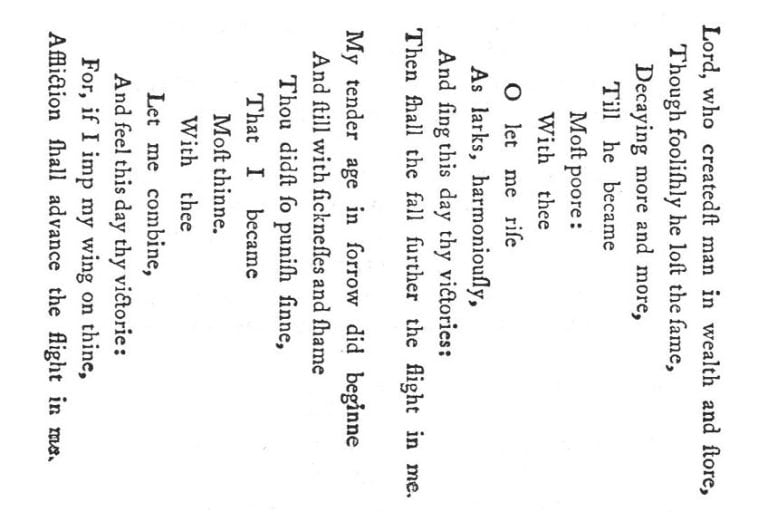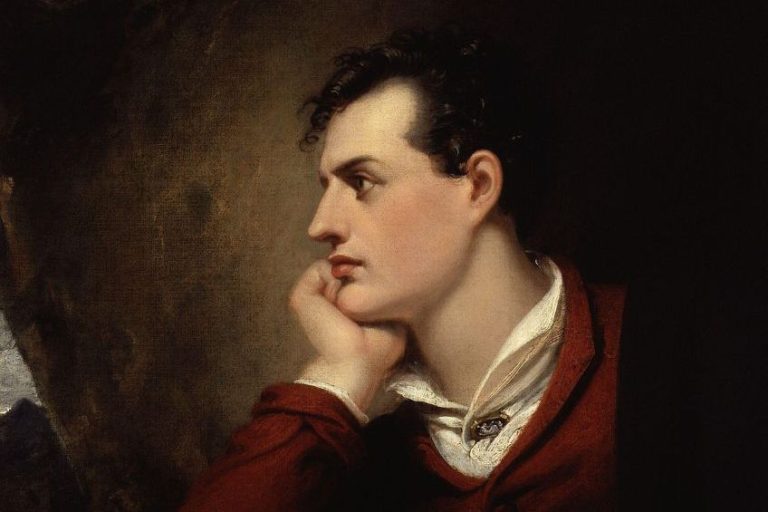Anapest in Poetry – Introducing a Popular Poetic Meter
Metrical structures can be found throughout formal poetry. Many varieties of poetry even mandate specific types of meter be used. This is where anapest in poetry comes into play. Anapestic meter is a well-known variety of meter that can be found in innumerable poems, and so we are going to examine this type of meter in an attempt to understand it. We will have a look at a definition of anapestic poetry, the different types of meters and how they vary from anapestic meter, the characteristics of anapest in poetry, and a number of examples of this type of meter in action. This should give a good understanding for those who are interested in this type of meter. If you are also interested in meter of this variety, keep reading!
A Look at Anapest in Poetry
It can be difficult to differentiate between different types of metrical structures and how they are used in a variety of different examples of poetry. Today, our focus will be on anapestic meter. This is a type of meter that is somewhat common but perhaps not as common as certain other varieties of meter. Meter in general forms part of the rhythm of a poem. This is why there are also so many different varieties of meter in the world. Anapestic meter will be the focus throughout this article, but before we dive into that larger discussion, we are first going to stop for a short while. The reason for such a thing is because there are some people who may wish to get a summary ahead of time.

A Summary of Anapest in Poetry
This is our short and sweet look at anapestic meter. While this is a very brief summarization of the information that will be presented throughout the article, it should give a good overview. This summary is for those who want to jump into this article with a little more information or for those who don’t have all the time in the world to read all of this.
- Anapest in poetry is an example of a type of poetic or metrical foot. There are a great many different varieties of metrical structures in the world, and anapestic meter is one of them. Other types of meter include iambic, trochaic, and spondaic meter. Anapestic meter is not as commonly used as other varieties.
- Anapest in poetry is arranged as three syllables. Many types of metrical structures, and most of the immensely famous ones, are arranged around a two-syllable structure. However, anapestic meter is one of the varieties that makes use of three syllables instead of only two.
- Anapest in poetry uses two unstressed syllables followed by a single stressed syllable. The arrangement of syllables in anapestic meter gives it a more light-hearted feeling. This is why anapestic meter can often be found in examples of children’s poetry.
This has been our short overview of anapest in poetry, but it is far from a detailed examination of this type of metrical structure in poetry.
If you want to learn significantly more about anapestic poetry and how it can be used, you will need to proceed to the next section to learn a little more.
A Definition of Anapest in Poetry
In very basic terms, the anapest in poetry is a type of meter. In this particular case, this metrical structure is arranged as three syllables. Many of the most common metrical structures instead make use of a two-syllable structure. In this particular variety, the poem uses two unstressed syllables that are then followed by a single stressed syllable. This has also led anapest in poetry to be termed antidactylus. This is because the dactylic metrical structure is arranged as something of a reverse. It uses one stressed syllable followed by two unstressed syllables. You can see that this means the anapestic meter is the dactyl in reverse. However, most use the dedicated term that is anapest to describe this type of metrical structure.
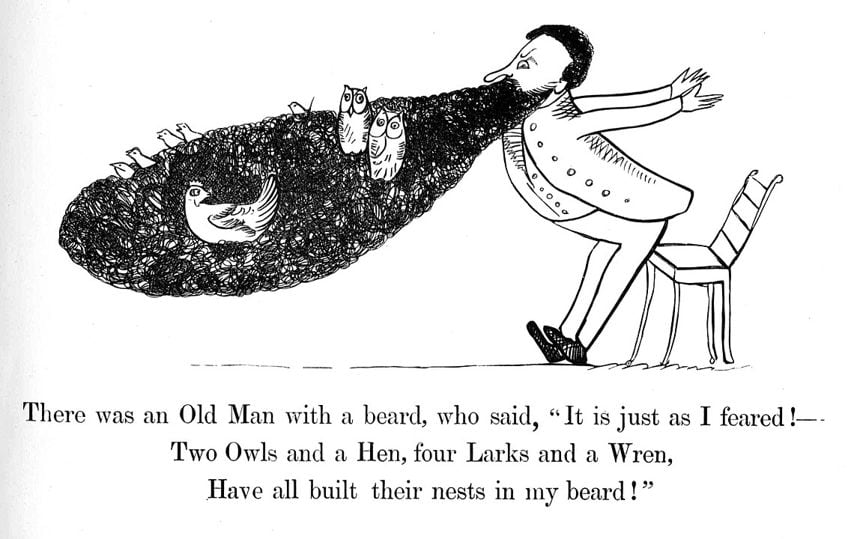
The Different Types of Meter in Poetry
We have already discussed what makes the anapest in poetry a distinct form of meter, but what about the other types of metrical structures? The others include the iambic structure, which is the most common and uses an unstressed followed by a stressed syllable, or the trochaic structure, which is the reverse of the iambic and entails the use of one stressed and one unstressed syllable.
However, these are some of the types that make use of two beats within the metrical foot.
There can also be those that make use of three syllables. The anapestic and the dactylic are examples of these varieties. The anapestic has been discussed in some depth already, but the dactylic is it in reverse. In addition to the use of these terms, which refer to the types of metrical feet, we also add on a numeral term that can tell us how many times these are repeated in a poem. So, a poem with monometer only has one of these feet whereas pentameter has five of them. So, we would describe a poem in which each line makes use of four anapestic feet as anapestic tetrameter.
The Characteristics of Anapest in Poetry
The inherent structure of the anapest in poetry means that it has a bouncier quality. There are two unstressed syllables that then jump into the final stressed syllable. This does not have as natural a cadence to it as a poem that makes use of iambic meter, but it does present us with the type of rhythm that is more indicative of light verse. Comic poetry, such as those favored in examples of nonsense and children’s poetry, will often make use of anapestic meter because of this more light-hearted and bouncy sound that is produced by the type of meter in question. This is the primary attribute for which anapestic meter is known, and it also allows it to be quite versatile in its usage.

The Popularity of Anapest in Poetry
The anapest in poetry can be found in a number of places, but these places tend to be more geared towards children or other light-hearted texts. It is especially useful in texts that are more humorous in nature. Some of those texts will be explored in the section below, but it should be remembered that the anapestic metrical structure is probably not the most common of all metrical structures. When it comes to which variety is the most common, it typically varies according to the language in question. However, in the English language, the most common is usually iambic metrical structures, especially iambic pentameter.
However, anapestic meter does continue to be used and is popular in certain spaces.
Examples of Anapest in Poetry
When we want to understand the ways in which a specific type of metrical foot can be used, we often need to dive into a number of examples. It can often be best to learn from what others have created, and that is why we are going to have a look at three distinct anapestic poems below. These are some noteworthy texts that use this type of metrical structure, and so if you want to learn more about how anapestic meter can be used in practice, let’s get to the first of the three poems below.

The Cloud (1820) by Percy Bysshe Shelley
| Date Published | 1820 |
| Type of Poem | Lyric poem |
| Rhyme Scheme | Variable |
| Meter | Iambic and anapestic |
| Topic | Cloud systems |
The Cloud is a poem that is made up of six separate stanzas, and anapestic meter can be found throughout those stanzas. In terms of this particular poem, it is used as a way of producing a kind of rhythmic flow and musicality as the subject matter of the text presents us with the image of the clouds as they move overhead.
It is not a serious poem, and this metrical structure aids that along.

Annabel Lee (1849) by Edgar Allan Poe
| Date Published | 1849 |
| Type of Poem | Lyric poem |
| Rhyme Scheme | ABC |
| Meter | Iambic and anapestic |
| Topic | Love |
Annabel Lee is a poem written about a young woman who has perished. The poem makes use of both iambs and anapests in the poem, and the use of the anapestic meter is adopted to present the poem in a more fable-like quality.
It is presented as if it is a fairy tale of sorts, and the slowing down and speeding up of the meter adds to this general feeling throughout the poem.

The Hunting of the Snark (1876) by Lewis Carroll
| Date Published | 1876 |
| Type of Poem | Nonsense poem |
| Rhyme Scheme | Variable |
| Meter | Iambic and anapestic |
| Topic | The search for the Snark |
The Hunting of the Snark is a nonsense poem. This is very common in the work of Lewis Carroll, and, in addition, this makes the use of anapestic meter completely understandable. The poem presents us with the search for a strange creature, and it is presented like a ballad with a musical quality to it. The use of anapestic meter aids this by giving the poem a more light-hearted and bouncy quality.

There are so many different types of metrical structures out there, and while anapestic meter is not one of the best known, it certainly is a popular variety. Today, we have examined anapest in poetry by looking at a definition of this type of meter, the characteristics of it, the popularity of the form, some of the differences and similarities it has with other instances of poetic feet, and a number of examples of anapest in poetry to illustrate how this type of meter can be used. Hopefully, this has given a good overview of this type of meter, but there are many other examples of this metrical structure in a wide array of poems, so if you like this type of meter, seek out some of those other examples!
Frequently Asked Questions
What Is Anapest in Poetry?
This is a form of metrical foot in poetry. This means that it refers to a specific number of stressed and unstressed syllables arranged in a specific order. In the case of anapest in poetry, this refers to the use of three syllables in one metrical foot. These three syllables are arranged as two unstressed syllables that are then followed by a single stressed syllable.
Which Types of Meter Are There Other Than Anapest?
The use of anapest in poetry is not all that common in terms of the different types of metrical feet. Some of the others include types of meter such as trochee, spondee, and dactyl meter. However, the most common in the English language is, by far, iambic meter. Within iambic meter, the most widely used is likely iambic pentameter.
How Popular Is Anapest in Poetry?
While something like iambic meter is far more common in much of poetry, the use of anapest in poetry can be found in a great many places. For instance, this particular type of meter is very popular in more light-hearted and humorous settings. As an example of this, there are many examples of anapestic meter that can be found in the works of Dr. Seuss.
What Are the Characteristics of Anapest in Poetry?
Seeing as the primary characteristic of this metrical variety is that it is made up of two unstressed and one stressed syllable, this would be the first thing that many take note of. However, this means that many poems that make use of this kind of metrical structure have a more light-hearted rhythm to them, and this gives them a bouncier kind of flow.
What Are Some Examples of Anapest in Poetry?
There are many different instances of anapest in poetry, and some of the most well-known include poems such as The Cloud (1820) by Percy Bysshe Shelley, Annabel Lee (1849) by Edgar Allan Poe, and The Hunting of the Snark (1876) by Lewis Carroll. There are many other examples of anapestic meter in poetry, especially in poems aimed at children or with a more humorous intent.
Justin van Huyssteen is a freelance writer, novelist, and academic originally from Cape Town, South Africa. At present, he has a bachelor’s degree in English and literary theory and an honor’s degree in literary theory. He is currently working towards his master’s degree in literary theory with a focus on animal studies, critical theory, and semiotics within literature. As a novelist and freelancer, he often writes under the pen name L.C. Lupus.
Justin’s preferred literary movements include modern and postmodern literature with literary fiction and genre fiction like sci-fi, post-apocalyptic, and horror being of particular interest. His academia extends to his interest in prose and narratology. He enjoys analyzing a variety of mediums through a literary lens, such as graphic novels, film, and video games.
Justin is working for artincontext.org as an author and content writer since 2022. He is responsible for all blog posts about architecture, literature and poetry.
Learn more about Justin van Huyssteen and the Art in Context Team.
Cite this Article
Justin, van Huyssteen, “Anapest in Poetry – Introducing a Popular Poetic Meter.” Art in Context. January 9, 2024. URL: https://artincontext.org/anapest-in-poetry/
van Huyssteen, J. (2024, 9 January). Anapest in Poetry – Introducing a Popular Poetic Meter. Art in Context. https://artincontext.org/anapest-in-poetry/
van Huyssteen, Justin. “Anapest in Poetry – Introducing a Popular Poetic Meter.” Art in Context, January 9, 2024. https://artincontext.org/anapest-in-poetry/.


